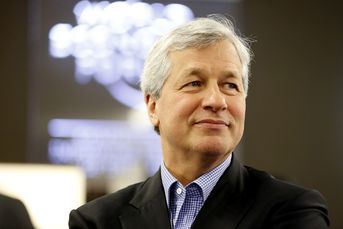Market forecasters dissect the sell-off

Stocks slide follows a very subdued third quarter
Wednesday’s market moves were enough to induce motion sickness, as the S&P 500 index fell 3.3%, the Dow down 832 points and the Nasdaq dropped more than 4.4%. But investment strategists note that this week’s slide follows a very subdued third quarter.
There’s debate about some of factors blamed for the market turmoil, including the extent to which the Federal Reserve’s rate increases are weighing on the economy and the markets.
John Lynch, chief investment strategist, LPL Financial
“The S&P 500 Index had one of its least volatile third quarters in history. In fact, it was the first year since 1963 that the index’s usually volatile third quarter didn’t have a single 1% change (up or down). The S&P 500 had gone 74 consecutive days without a 1% move — the 10th longest streak in history. The bottom line is: Equity markets were wound tight and some type of volatility was likely.
“October has historically had above-average volatility and average returns. October is known for spectacular crashes (1929, 1987 and 2008), but in reality it’s about average in terms of returns. What it really should be known for is volatility. Incredibly, no month has seen more 1% changes (up or down) than the month of October for the S&P 500 going back to 1950.”
Citi Private Bank’s Global Investment Committee
“The US expansion is getting older and the Fed is ever tighter. This impacts every global asset class to some degree and suggests a gradual shift to a more defensive asset allocation over time. Nonetheless, the drop in global shares in the past 24 hours is following the course of many routine corrections that have been followed by recoveries. We don’t advise properly diversified investors with multi-asset class portfolios to sell into such a disorderly panic. Those under-allocated should look for opportunity.
“Near-term implied volatility for US equities has doubled in just over a week. Ninety-eight percent of all global equity markets fell in the past day (67% with a drop larger than 2%). Sector and stock correlations spiked, consistent with indiscriminate selling. Even if the declines continue as severely as the January 2018 case — or the two cases in 2016 before it — such drops are about 5X more frequent than lasting bear markets consistent with economic recessions (typically, these are full year periods of corporate profit declines).”
Brad McMillan, chief investment officer, Commonwealth Financial Network
“Yesterday was a bad day in the market. The Dow was down more than 800 points (800 points!), and the S&P was down almost 100 points (100 points!). Surely, this is the beginning of the end.
“Maybe so. But if you turn those drops into percentage terms, of just more than 3 percent, they don’t look nearly as scary. I’ll grant you, declines of 3 percent in one day can rattle markets. Historically, however, they happen every three to six months. So, in a normal year, we should see a day like yesterday two or three times — and that is just what is happening in 2018. We saw an even bigger drop in January and February (remember that?) and another one in March. This year is shaping up as quite average in that sense.
“Bigger picture, then, we are not yet at a worry point. The S&P 500 is now down just under 5 percent from the all-time high, which doesn’t even qualify as a correction. We have returned to levels last seen in July. Again, it is not nothing but certainly not a big deal.
“This is not to minimize yesterday but, instead, to try to understand what it means. Is this a time to worry? History says days like this are normal. So, as scary as yesterday’s market action has been, the damage thus far is not actually all that bad. Something to keep in mind. Still, there is reason to pay attention.”
David B. Armstrong, president and co-founder, Monument Wealth Management
“Based on the current situation (writing as of 10 pm Wednesday night with futures showing more selling on Thursday), stepping in to buy at these levels is hardly an easy choice. But, the reality is shocks like the one yesterday, coupled with the past few days, have a hard time lasting in the current economic environment.
“People are still plagued by the trauma of 2008. Ten years later, even after the incredible gains off the March 2009 low, there are still those with a hair trigger who think any setback is the beginning of another 50% sell-off. While some further lows are not out of the question, it’s hard to see a catalyst for a sustained push lower like the one that came [Wednesday].”
CFRA U.S. Investment Policy Committee
“Interest rate fears combined with a dash of tariff and inflation concerns have driven the S&P 500 sharply lower in the past 5 trading days. Investors are having a hard time digesting the possibility of a more hawkish Fed when the 10-year Treasury yield is above 3.2%. We don’t believe the Fed’s plan to raise interest rates once more in 2018 and three times in 2019 is a problem. That’s because the Fed funds rate has historically traded at an average of 1.3 percentage-points above the year-over-year change in Headline CPI since 1948. Today’s Fed funds rate at 2.125% is nearly 140 basis points lower than what should be a 'normal’ Fed funds rate of 3.5%. Therefore, monetary policy remains in a stimulative, net-negative real rate environment (rates are below inflation).”
Tom Balcom, founder, 1650 Wealth Management
“Continued concerns over a potential trade war. It has been reported that China owns nearly $1 trillion in U.S. Treasuries. If the trade war worsens, China could dump their Treasury holdings. If they were to take this action, the price for Treasuries would decline and interest rates would increase. When there are more sellers (China) than buyers, you may recall from your Economics 101 class that prices decline. Bond prices and interest rates are inversely related, so a decline in prices would result in an increase in interest rates. As the industrialist J. Paul Getty famously said, 'If you owe the bank $100, that’s your problem; if you owe the bank $100 million, that’s the bank’s problem.’ In the United States-China relationship, China is clearly the bank. While the “nuclear action” is unlikely due to the damage it would cause to the global economy, it could certainly be used as a bargaining chip by the Chinese in their negotiations with the United States.”
Brad Lamensdorf, manager of the short-only Ranger Equity Bear ETF
“In 2008, to stave off the worst financial crisis since the Great Depression, the Fed began a program of 'quantitative easing’ to save the economy, eventually buying trillions of dollars of government bonds and mortgage-backed securities to keep interest rates low. Now amidst strong economic growth the Fed has initiated a program of 'quantitative tightening,’ selling off the assets it had accumulated, which by itself means higher interest rates. However, as the government floods the market, bond dealers are taking action to hedge their growing positions, including shorting Treasuries. This could drive interest rates even higher and equity markets lower.”
Learn more about reprints and licensing for this article.







